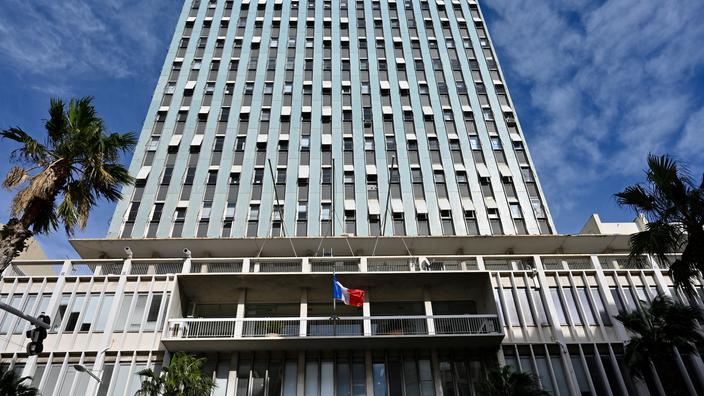A little over 33 days.
This is the average absenteeism of public service employees in town halls in France, according to a ranking revealed by the liberal think-tank iFRAP based on the latest social reports available, those of 2017. The report notes that the aging population among civil servants, the increase in “long sick” leave or the time taken to return to work after an absence causes absenteeism in town halls to swell.
The city of Saint-Denis (Seine-Saint-Denis) is the one with the highest rate of absenteeism, with 52 days off on average.
Read also: Since the return of the waiting day, territorial agents are less absent
To establish this classification, iFRAP collected data from 53 municipalities representing 142,000 agents and 8.9 million French people living in these cities.
A representative national sample, therefore, even if these data are from 2017, because those for 2019 have not yet been compiled.
Public / private
Under the name “
absenteeism
”, the iFRAP retains in its report ordinary illnesses (influenza, gastroenteritis, tonsillitis, etc.), work accidents attributable to service or to commuting and long-term illnesses.
On the other hand, it does not retain any absences linked to paternity, maternity or adoption.
In the end, the national average for cities is therefore 33.2 days of absence per year, with large disparities according to the territories.
It is difficult to establish a comparison with previous years, the calculation methods having evolved.
On the other hand, iFRAP recalls the data from the Ayming barometer, which assesses absenteeism in the private sector each year.
For roughly equivalent criteria, it stands at 18.6 days per year and per employee, or just over half of the equivalent figure in the public sector.
Orleans good student
City by city, we therefore note that it is in Saint-Denis that absenteeism is highest, followed by Toulon (50.6 days) and Marignac (45.9 days).
Then we find the cities of Toulouse (43.2), Fort-de-France (41.5 days) and Tourcoing (41.4 days).
On the other side of the ranking, we find Orléans (19.1 days), Nîmes (20 days), Le Tampon (La Réunion; 21.3 days) and Boulogne-Billancourt (21.5 days).
One of the key factors in this study is the civil servants' waiting day, this 24-hour period, in the event of a stoppage, during which the civil servant receives neither salary nor compensation.
Indeed, the figures date from 2017 and this waiting day was not applied.
It was put back in place a year later, in 2018. One can legitimately imagine that by including this deficiency day in the calculations, the same classification would have presented figures less important than here.
Despite everything, the iFRAP specifies that "
the withdrawal day has an effectiveness especially on short breaks but cannot be considered as the alpha and the omega of a policy of prevention of absenteeism
".
According to Agnès Verdier Molinié, director of iFRAP, it would also be necessary to go further than a single day of deficiency to really change these figures.
"
Why do we not fix this system on the one that prevails in the private sector, that is to say three days of waiting?
»She asks herself.
Read also: Ifrap's plan to reindustrialize France
Another reason for the high level of absenteeism in the municipalities: the aging of the population among public service employees.
Indeed, according to the think-tank, which is based on a report by MPs Cendra Motin and Valérie Petit from June 2019, “
there is no abnormal increase in the duration of long stops, this increase is a reflection of an underlying trend, namely the increase due to the aging of the working population
”.
"
These absences are in the territorial public service, as everywhere else, the reflection of the aging of the working population
," the report continues.
But in the territorial area there is precisely a problem of cohort: the workforce developed from the decentralization laws in the years 84-85 and today more than 2/3 of the employees of the territorial area are over 45 years old
”.
Recovery job
Finally, iFRAP notes another problem, that of the reinstatement of civil servants after long absences.
A return to work procedure that can take several months depending on the case.
“
The agents awaiting professional reclassification generate a large volume of days off because they remain off until the community finds them a suitable position,
” for example explained to iFRAP the town hall of Tourcoing.
At the end of 2017, there were 15 agents awaiting professional reclassification.
Over one year, this represents 5,475 days of sick leave, or 9% of general absenteeism.
"
For Agnès Verdier-Molinié, this absenteeism in the territorial civil service could be better supervised.
First, as the report underlines, civil servants come under a special social security scheme, and not under the general scheme (the Primary Health Insurance Fund (CPAM)).
“
For them, the benefits most often come from the territorial employer himself
,” the report wrote.
And to continue:
“For the tenured agents, this means that the public employers are their own insurers.
In practice, sick leave forms should not be sent to the CPAM but only to the employer who can, in particular in the context of long sick leave, carry out checks. "
"
The State is therefore both employer and insurer, it is he who pays when people are absent
," continues Agnès Verdier-Molinié.
We must succeed in transferring control of sick leaves to the CPAM.
Of course, this would cost the communities in social contributions.
But the controls would be better done and there would probably be less absenteeism, which would compensate the expenses in contributions.
"
To read also: Faced with the risk of collapse of our economy, the shock plan of Ifrap
In addition, Agnès Verdier-Molinié questions the merits of the special leave of absence (ASA) for civil servants.
"
It is a specificity of the public service that the general public discovered during confinement: placed in ASA (and not in partial unemployment), a public official does not work but remains paid at 100% and continues to accumulate paid leave (but no RTT) and advancement,
”the report explains.
"
There is no reason why public service employees should be paid 100% when those in the private sector were at 84%
," continues Agnès Verdier-Molinié.
I am also surprised that we have still not evaluated the cost of these ASAs since the start of the epidemic, when we know precisely that short-time work cost 34 billion euros in the private sector for the first time. containment
. "
And to conclude: “
All these public / private distortions lead to very costly management for the community.
"









